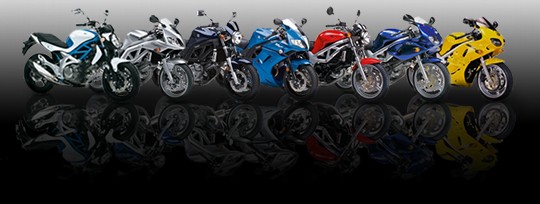 |
 |
| Bikes - Talk & Issues Newsworthy and topical general biking and bike related issues. No crapola! Need Help: Try Searching before posting |
 |
|
|
Thread Tools |
|
|
#21 | |
|
Guest
Posts: n/a
|
Quote:
|
|

|
|
|
#22 |
|
Member
Mega Poster
Join Date: Jul 2003
Location: Doncaster, oop norf
Posts: 2,128
|
You'r enot dealing with steady flwo though, so every time the intake valve opens on one cylinder of (say) ZRX1100, it tries to suck in approx 275ml during the induction stroke (swept volume). Even if the pod holds this much, part way through the stroke, it'll be half full and will be being replenished by air coming through the filter. Thus it's at a lower pressure than if it were a larger reservoir like an airbox so you're feeding the carbs with air at lower pressure. Thus lower flow and poorer volumetric efficiency.
|
|
|

|
|
|
#23 |
|
Member
Mega Poster
Join Date: Jul 2003
Location: Warwickshire
Posts: 2,804
|
Mostly reliable previous info.
Big airboxes are much to do with noise these days, plus having a "stable" atmosphere to draw from means consistent calibrations for emission reasons and consequently consistent performance. Exposed intakes are subject to all sorts of turbulence so not as consistent or predictable and can cause all sorts of issues with air meters or pressure sensors (as well as carbs). I'm talking from a manufacturers point of view, you can make more or less anything run but not necessarily to meet regs. One big air filter generally is less restrictive than smaller individual ones, each cylinder sees the big filter in turn. Aftermarket foam type filters usually don't filter all that much, they keep the bricks and dead birds out and are better than open intakes, but not generally all that good for extended engine life. Yes, users will now tell me their engine has done a zillion miles on them and is in perfect nick. European air quality is pretty good these days as long as you don't go into quarries etc. Road dust is very abrasive however, and the silicon (sand) causes all sorts of problems with hot wire/film air meters. A big airbox reduces the pulse amplitudes so the intake spout can be smaller diameter for a given typical pressure drop (smoother flow) and thus achieve better noise control. The minimum size depends on how many cylinders it's supplying to a large extent, as well as the overall engine size (i.e. the individual cylider swept vol. gives the pulse size). Usually bigger volume = better, space is the limitation. More noise is an easy way of reinforcing the impression of more power, not that there's necessarily anything wrong with that if it pleases the rider. A reasonably well designed big airbox and air filter will give negligible power loss compared to open intakes, a few percent or so usually, but a quiet intake is much less impressive than a noisy one.
__________________
"Artificial Intelligence is no match for natural stupidity" |
|
|

|
|
|
#24 |
|
Guest
Posts: n/a
|
Hello all, first post and all that, had an '04 pointy for just over a month now.
I won't pretend to know much about this, although my understanding of the airbox is that one of its functions is to allow a good throttle response and generally speaking, a bigger airbox is better at this-I guess that in racing its better to have cones as you are aiming to be in the powerband at all times where constant airflow is preferred. Horse poo? Maybe, but next time you're in a car stick your head right out into the airflow and see if you can breath faster! |

|
|
|
#25 | |
|
Member
Join Date: Jul 2010
Location: Devon
Posts: 876
|
Quote:
An air box means the high, peak air demands of the engine are smoothed out into a lower and more constant flow. This gives less pressure drop across a given sized filter. It also damps the pulses caused by the inlet valves opening and closing which can cause havoc with fuelling, and it will contain any stand off which short cones filters aren't great at doing. |
|
|
|

|
|
|
#26 |
|
Guest
Posts: n/a
|
As was pointed out above, a carb running a tea strainer can be as efficent as either a pod or conventionally flowed (ie airbox or airbox modded) delivery. All you need is unobstructed air to suck in. Thats yer induction roar/howl which journos bang on about. You don't need air to be 'flowed' directly to the carb. The thing just needs to be allowed to breathe in on behalf of the lump.
Pressure only comes into it via climate or altitude, which why dyno software takes into account barometric conditions.... at least, that's the impression I've been under for the last twenty five years |

|
|
|
#27 |
|
Member
Join Date: Jul 2010
Location: Devon
Posts: 876
|
A carb with a tea strainer won't be very useful at all. Often you see carbs running on classic bikes and cars with a gauze over the air inlet, these are massively restrictive.
|
|
|

|
|
|
#28 | |
|
Noisy Git
Mega Poster
Join Date: Apr 2007
Location: Halifax/Leeds
Posts: 26,645
|
Mikerj, I suppose only way we'd settle this one is to see some dyno curves, but I don't think anyone's done a direct comparison of pods vs a decent standard shaped one.
I'm still fairly convinced the jet size increase from stock - race filter (normal shape and position) is due to reduced pressure drop across filter and this is what gives resulting power gain. Quote:
Pressure is what makes the pistons move and turns the wheels, pressure is what forces the fuel through the jets, pressure is what picks the carb slide up to control the fuel flow. Pressure has been around longer than 25 years and longer than dyno software!
__________________
Currently Ex Biker
Now rebuilding a 63' fishing trawler as a dive boat |
|
|
|

|
|
|
#29 | |
|
Guest
Posts: n/a
|
Quote:
yes yes but what was originally being implied on here was that there was a difference between pressure on one side of the filter and on the other: surely the difference is about airflow up to the point where - for what ever reason and through whatever mechanism - pressure is raised or lowered.... |
|

|
|
|
#30 |
|
Noisy Git
Mega Poster
Join Date: Apr 2007
Location: Halifax/Leeds
Posts: 26,645
|
Aye but fluid mechanics says a pressure drop will reduce flow, a more restrictive "thing" (pipe, valve, bend, filter, whatever) will reduce flow more.
__________________
Currently Ex Biker
Now rebuilding a 63' fishing trawler as a dive boat |
|
|

|
 |
|
|
 Similar Threads
Similar Threads
|
||||
| Thread | Thread Starter | Forum | Replies | Last Post |
| Cooking on induction | Ed | Idle Banter | 3 | 08-12-10 09:38 PM |
| Induction kit | Tau Gee | SV Talk, Tuning & Tweaking | 5 | 12-07-09 08:35 AM |
| Anyone ever use.... Pipercross Induction kit | jameshayes | SV Talk, Tuning & Tweaking | 3 | 25-11-08 02:32 PM |
| I'm excited - wife has a date for induction | Colby | Idle Banter | 30 | 17-02-08 02:21 AM |
| Pipercross induction kit | danf1234 | SV Talk, Tuning & Tweaking | 3 | 10-05-07 11:26 AM |